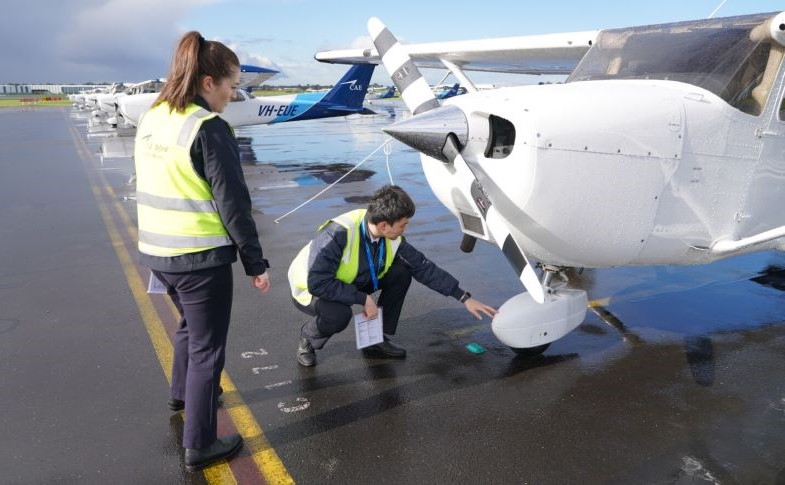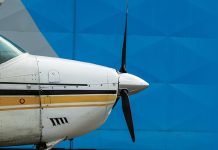Reading a maintenance release (MR) is a crucial skill for pilots. Ensuring you understand the status of an aircraft’s maintenance and overall airworthiness is not just a formality but a linchpin in the safety chain.
In case you need a refresh of the basics, here they are.
MR verification
Verify that you’re looking at the current MR for the aircraft you’re about to fly. Seem obvious? You’d be surprised.
Aircraft identification
Check the aircraft’s identification details, including its registration number and aircraft type, match the information on the MR. Any discrepancies should be immediately addressed with the maintenance personnel.
Release date
Note the place, date and time of issue of the release. Check the total aircraft time-in-service and when the maintenance release expires. An expired MR is not valid for flight. While maintenance personnel do their best, no-one is exempt from human error.
Maintenance provider information
Identify the CAR 30 maintenance organisation or provider that performed the maintenance, typically found at the top of the MR. Verify the MR has been signed and that a LAME licence or authority number is entered in the space provided.
Required maintenance
Check that no maintenance will be required during the period of your proposed flight. Part 1 of the MR sets out any scheduled maintenance that will be due during the period of validity of the document. Some maintenance items may fall due on a specific date and others may be required when the aircraft reaches a specified time in service.
Compliance statements
Check that previously due airworthiness directives, service bulletins or scheduled maintenance have been cleared by entries stating that the work has been completed in accordance with the data and certified by a LAME (or pilot if the maintenance is a pilot maintenance task).
Limitations and restrictions
These may include operational restrictions or requirements for further inspections after specified flight hours.
Talk to your maintenance crew
As a pilot or aircraft owner/operator, you’re responsible for understanding the MR and that the aircraft is airworthy. If any part of the MR is unclear or you have questions, chat with your maintenance personnel.
Three common errors in reading the MR:
- Inadequate understanding of terminology
‘Often pilots don’t know how to complete the daily inspection and close off the MR hours,’ says Steve Reh, Chief Flight Examiner at ALTO CAP Flight School. If you are unsure – ask!
- Ignoring limitations and restrictions
If you ignore limitations and restrictions, this could lead to unsafe conditions in flight.
‘An example would be an aircraft that is certified for VFR but gets used for IFR,’ says Ben Roocke, Chief Engineer at Gulfstream Aviation.
- Flying with due or overdue endorsements or defects
Pilots must ensure endorsements setting out an airworthiness directive requirement, or scheduled maintenance action, are current.
A great article previously published on defects can be found here.
Ben says, ‘I have seen pilots who have flown their aircraft with overdue airworthiness directives, and luckily enough, there have been no incidents. If a pilot has missed an endorsed item on the MR, going past its hours or calendar time, they need to contact their maintenance organisation to resolve whatever was missed.’
Reporting of major damage or defects is mandatory, but you should report any service difficulties as this helps CASA, aircraft manufacturers, maintainers and other aircraft users to be aware of any developing trends that may affect aircraft reliability.
More information:
- Civil Aviation Advisory Publication 43-1 – Maintenance release – guidance about the use of the MR
- CAR Part 4B – useful information for defect reporting.
Flight planning is one of the special topics on our Pilot safety hub.
Refresh your knowledge at casa.gov.au/pilots






As a retired Airline Transport Pilot who also holds an FAA Aircraft Mechanic Licence for Airframe and Powerplant for aeroplanes and helicopters (equivalent to a LAME), and an Army-trained Maintenance Test Pilot, one of the most frustrating aspects I have experienced throughout my aviation career spanning 36 years for reading, “Checked and found OK”, beside a defect write-up, often finding it is a method employed to defer doing any real aircraft maintenance or to keep an aircraft flying whilst awaiting parts to arrive. And, it is not necessarily the domain of GA aeroplanes and helicopters, I have experienced it as a captain of Boeing 747 and 737 jets, as well. Imagine having ATC inform you that you are paralleling track seven miles, whilst flying transoceanic or entering another country’s airspace, though the INS was “Checked and found OK”. Be suspicious, when the same defect appears in the aircraft Maintenance Log and is signed off, “Checked and found OK”. Keep writing the defect up, until it gets fixed. Another frustrating experience is trying to understand what the heck the previous crew was actually reporting. It might be worth every pilot’s effort to seek advice from the Chief Engineer or an experienced LAME in the Maintenance Department how they would like to see an write-up for a defect. It will facilitate timely assessment and repair of the defect, or if deferred, it will help the flight crew or pilot of an aircraft to easily understand the problem. As for myself, I wanted to break down the barriers between Aircraft Mechanics and Pilots, as well as speak their language, so I pursued an Aircraft Mechanic Licence, more than three decades ago. I firmly believe it enhanced despatch-reliability for my employer or airline. Next time Qantas and Virgin has a furlough of Flight Crew, the pilots could gain employment as an Aircraft Mechanic, instead of driving a garbage truck, which enhance their overall understanding of how an aircraft is put together and its systems. Just a thought. There is a shortage of Aircraft Mechanics, throughout Australia.
it would be useful to provide a link to the references documents you quote.